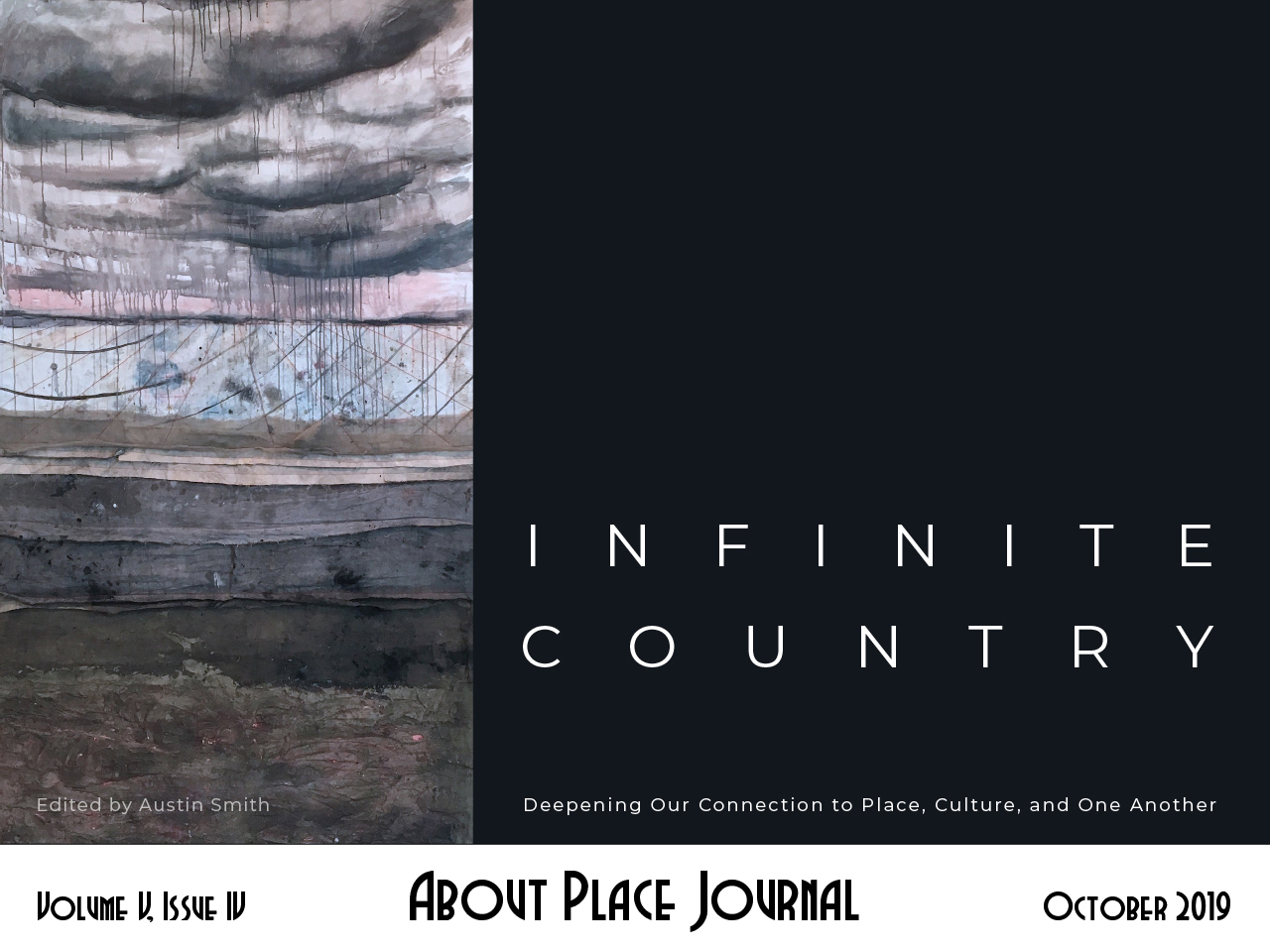We welcome you to this issue of About Place. In titling our issue “Infinite Country: Deepening Our Connection to Place, Culture and One Another,” we were inspired by the title of a book by the essayist and activist Rebecca Solnit, called Infinite City: A San Francisco Atlas. Solnit’s book is described as a “brilliant reinvention of the traditional atlas” that examines “the many layers of meaning in one place.” We thought, “What if we took this model, of producing a deep map of a city, and applied it to the country as a whole?” And so, the idea of “Infinite Country” was born.
The definition of the word infinite is: “limitless or endless in space, extent, or size; impossible to measure or calculate.” So what would it mean for a country to be infinite? There would be no border wall, no separation of families, no caging of children. There would be no condescending labels bequeathed by one portion of the populace upon the other such as “elites” or “deplorables.” There would be no generalizations of an entire region such as “flyover country.” Nor would the political, cultural or racial schisms that divide us into screaming camp take precedence over the essential personhood of each citizen and refugee.
The poems, essays, stories, photographs and paintings we have selected for this issue imagine this infinite country, and our hope is that by sharing this work with you, we can help bring this more compassionate and inclusive future to fruition. This is not to say that the work you will find in this issue is solely celebratory. There is also much mourning here. We have organized the issue into four parts, corresponding with the cardinal directions. Some of the pieces were placed in their respective sections because they explicitly place themselves in a particular geographic region, while other pieces were placed because of how they connect to the themes we’ve associated with the four directions: North: Truth, South: Courage, East: Rebirth and West: Mourning.
In the weeks after Toni Morrison’s death, we are reminded of her dictum that all art is political—that is, all art has a perspective, a view, something to say. This is different from art being politics, or part of the political machine—or, more reductive, propaganda.
Art explores that supple silky part of ourselves that craves story, that craves imagery, that yearns for vivid language: art breaks us, and our perspectives, open.
Given the reality of the biosphere—the increasing carbon, the topsoil erosion, the winnowing glaciers—as well as the pressure felt around the world through mass migration, trade wars, and a culture of apathy, art wakes us up. It says, pay attention.
If the goal of life, as Wallace Stegner so deftly put it, is to grow more magnanimous, then art is a daily tonic for that life. For without art, how can we learn, shift perspectives, grow in generosity and curiosity? In the words and stories of others, we not only stretch our imaginations, we come face to face with the more difficult task in life: the deep encounter with ourselves.
Our hope is that this issue will help to carry out the mission elucidated in the title: to deepen our connection to place, culture and one another. Thank you for spending some time in Infinite Country.
Austin Smith
Taylor Brorby
Brenna Cussen Anglada


